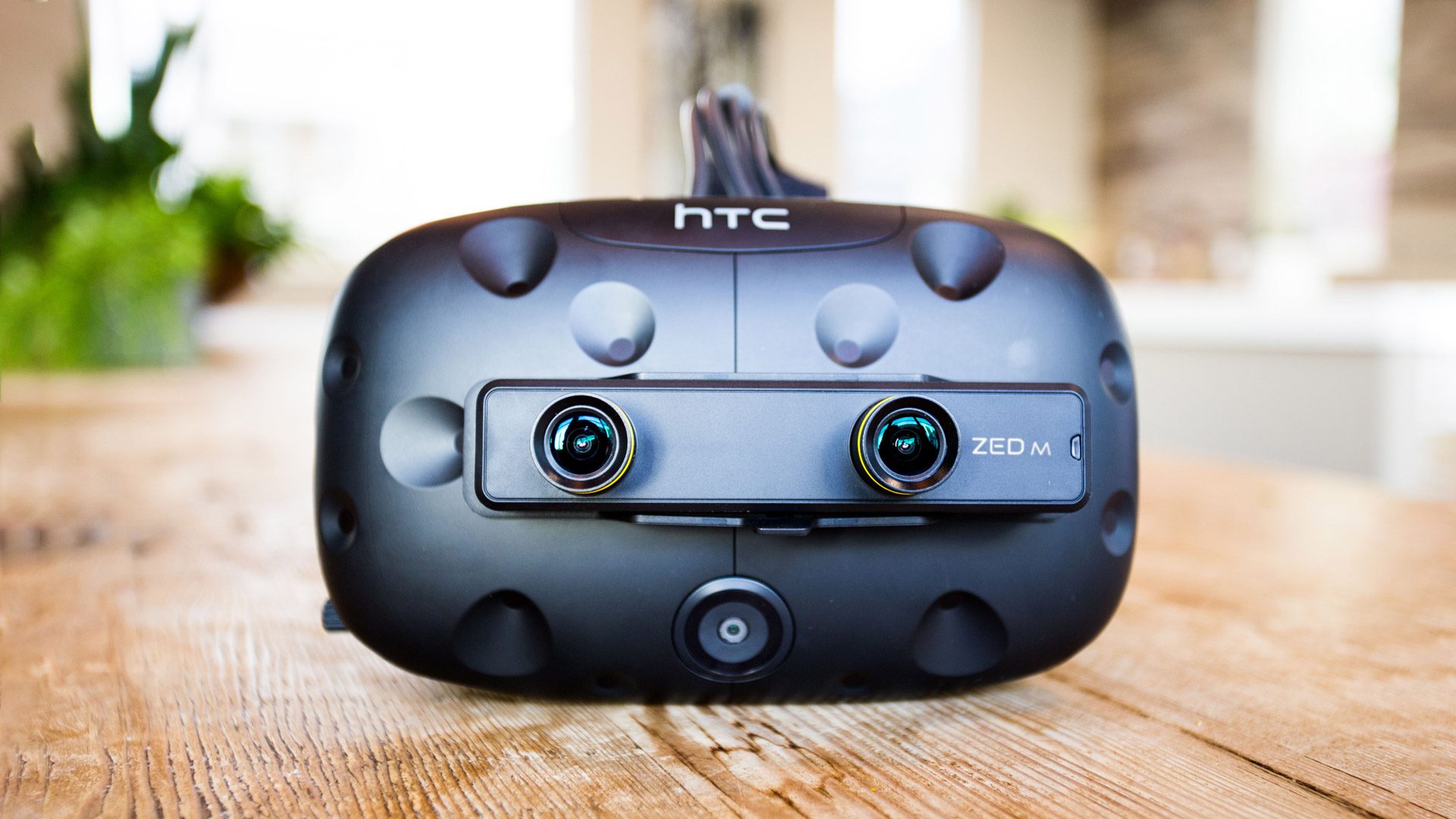The developers behind Modbox (2016), the VR physics sandbox for SteamVR-compatible headsets, have been experimenting with augmented reality recently, something they say is a perfect fit for the Modbox software.
Developer Lee Vermeulen didn’t wait for VR headsets like the Vive Pro to get an AR function, but rather strapped a stereoscopic Zed Mini to his original HTC Vive in effort to push Modbox forward into augmented reality.
“We are planning to make Modbox into a AR building application, which we feel it’s perfect for,” Vermeulen told Road to VR.

In VR, Moxbox basically offers users a sandbox to experiment with toys, mods, and a place for impressive object destruction, although the app has taken a slightly more serious tone lately with its recent update which allows multiple users to concurrently script entity behavior much like you can in the Unity game engine. Modbox is currently in Early Access on Steam, supporting HTC Vive and Oculus Rift, although that may change in the near future.
AR games, Vermeulen tells us, “need to match the environment they’re in; so to do that, games usually tend to adjust based on the environment in a procedural way. For Modbox though, we’re creating something that allows people to make games to exactly match their environment, and hook up their AR worlds to their smart home.”
Modbox AR Experiments
While the team hasn’t discussed when they’re releasing the AR version of Modbox, Vermeulen highlighted a few interesting use-cases, including a way to change the color of his WiFi-connected Philips Hue Lights, and to turn each light off by ‘shooting’ it with a virtual bow and arrow:
Here, they show off what a self-made AR version of Space Pirate Trainer (2017) might look like. Drone battle in the living room anyone?:
These AR experiments are possible because Vermeulen previously mapped his environment and placed the virtual items in himself, something that requires a little DIY, but entirely possible thanks to the application’s numerous entities including weapons, objects, and NPCs.
Below we see Vermeulen importing a NPC and playing catch with a virtual basketball. To create the effect of ‘pulling’ the NPC from his monitor, he set a virtual camera to match the monitor’s position, making it seem like a magic window.
Virtual reality developers eyeballing augmented reality can get started using this setup, although admittedly the ZED Mini camera + VR headset combo actually overshoots the mark somewhat. It relies on a gaming computer’s elevated graphical capabilities, and presents the user with a comparatively wide field of view not possible on current AR headsets. The Vive controllers, which have 6 degrees of freedom (6DoF) positional tracking, are also unique to VR at the moment, although Magic Leap One is said to ship later this year with a single 6DoF controller which could allow for many of these sorts of interactions.
Just like in the early days of virtual reality, the first developers to create something fun and useful are kind of like the first miners to a gold rush. So while AR headsets still have a ways to go, seeing these early stabs at solving the question of content gives us an exciting look into what could be the near future of AR head-mounted displays.







